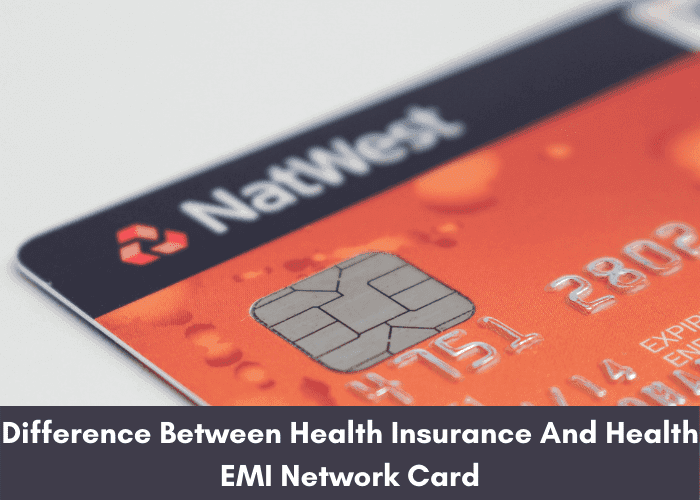As people become more and more aware of not just health, but also well-being and wellness, it is no surprise that there is also growing curiosity, awareness and demand for financial products linked to health and wellness.
There are a lot of new words and new concepts, and very often words are used interchangeably, which leads to confusion about their actual meaning. In order to ensure 360-degree coverage for not just your basic health, but also your overall wellness, we’re going to differentiate between health insurance and Health EMI Network Cards. We’re also going to touch upon the difference between mediclaim and health insurance. And to lay a foundation for all of that, let’s talk about the difference between health expenses and wellness expenses with the help of an example.
When Radha is hospitalized for tonsillitis, it is a health-related expense. The X-Rays taken by the doctor to evaluate the swelling in her tonsils during her hospitalization, and her hospitalization bill will be covered under her health insurance policy.
Pleased with how easily and smoothly her cashless hospitalization was managed by her health insurance company, Radha is keen to finally go for those teeth braces she has been putting off, because she was worried about the cost burden. Maybe she can finally also get a treatment for her acne, she thinks to herself. However, she is disappointed to find out that dental treatments and skin treatments are categorized as cosmetics, and not health.
But Radha need not be held back from getting her teeth aligned and her skin cleaned up. She can use a Health EMI Card to pay for all her medical expenses across treatments, diagnostic tests and pharmacy bills. But before she jumps to type the words “health card apply” in search, it is important that she knows exactly what she is getting into.
Scope is one of the key differences between health insurance and a Health EMI Network Card.
While health insurance covers expenses linked to hospitalization for at least one night, a Health EMI Network Card, like the one offered by Bajaj Finserv covers all medical expenses. These include (but are not limited to) dental care, eye care, diagnostic care, stem-cell treatments, maternity care, slimming treatments, cosmetic and plastic surgeries, and hair transplants among others.
When it comes to health insurance, a sum is paid to insure you for a period of one year, in most cases. During that one year, if you are hospitalized, a large chunk of your hospital bill will be covered. In the fortunate event that you do not need to be hospitalized, however, the sum paid as premium is also forgone. You must pay again next year in order to enjoy insurance cover.
In contrast, a Health EMI Card works more like a credit card, but one that is specifically for medical expenses. However, you can break down heavy health related costs into lighter, smaller EMI payments. For example, if Radha’s teeth braces and skin treatment were together going to cost her about Rs. 100,000, it would definitely be easier for her to pay it over the next 2 years than to cough up the whole amount right there and then.
A Health EMI Card, like the Bajaj Finserv Health EMI Network Card allows users to pay in up to 24 monthly instalments. In Radha’s context, her monthly expense for these two big expenses, would actually amount to a far more palatable Rs. 5,000-odd a month.
You can refer to the Health EMI Network Card as having a wider scope than health insurance. Meanwhile, the difference between mediclaim and health insurance is that the former has a still narrower scope. Mediclaim covers only hospitalization expenses, whereas health insurance also lets the insured opt for critical illness cover.
Now that you know the difference, it is imperative that you opt for a health card, such as the Bajaj Finserv Health EMI Network Card. Ensure that your medical and hospital bills do not weigh you down, and pay for them in easy, monthly instalments.
warning ….?…. Date May/08/2021…?complete your profile…..otherwise, odysseynews did not accept your article

